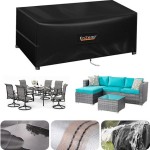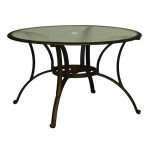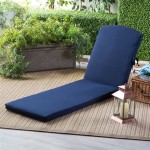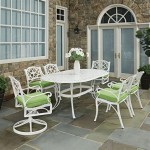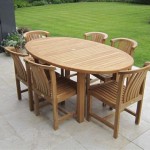Best Outdoor Furniture for Windy Areas
Outdoor spaces offer a respite from the confines of indoor living, providing areas for relaxation, dining, and entertainment. However, windy environments can present a challenge to enjoying these spaces. Selecting appropriate outdoor furniture designed to withstand strong winds is crucial for maintaining safety, preventing damage, and ensuring lasting enjoyment of the outdoor area.
This article addresses the factors to consider when choosing outdoor furniture for windy areas, exploring various materials, designs, and strategies to mitigate the effects of strong winds. The information provided aims to equip readers with the knowledge necessary to make informed decisions when purchasing outdoor furniture for wind-prone locations.
Key Considerations for Windy Environments
Several factors must be considered when selecting outdoor furniture for windy areas. These include the weight of the furniture, its design and profile, the materials used in its construction, and the availability of anchoring options. Ignoring these factors can result in furniture being blown around, leading to damage to the furniture itself, the surrounding landscape, and potentially causing injury.
Weight is a primary consideration. Heavier furniture is inherently more resistant to being moved by the wind. Lightweight materials, while convenient for portability, are unsuitable for windy environments unless securely anchored. The design profile also plays a significant role. Low-profile furniture with a wide base is less likely to be affected by the wind than tall, narrow pieces. Finally, the availability of anchoring options, such as the ability to secure furniture to a deck or patio, can provide an extra layer of stability.
Understanding the prevailing wind conditions in the specific location is also important. Areas with consistently strong winds require more robust furniture solutions than areas where strong winds are infrequent. Local weather patterns and microclimates should be taken into account to determine the appropriate level of wind resistance needed.
Suitable Materials for Wind-Resistant Outdoor Furniture
The choice of materials significantly impacts the wind resistance of outdoor furniture. Certain materials are naturally heavier and more durable than others, making them better suited for windy environments. Common materials include heavy metals such as wrought iron and steel, dense woods like teak and acacia, and certain types of high-density plastics.
Wrought Iron: Wrought iron furniture is known for its substantial weight and durability. Its intricate designs often allow wind to pass through, reducing the surface area exposed to wind pressure. Wrought iron requires regular maintenance to prevent rust, but its inherent weight makes it an excellent option for windy areas. Its timeless aesthetic also contributes to its popularity.
Steel: Steel is another robust material suitable for outdoor furniture. Steel furniture can be treated with powder coatings to enhance its resistance to rust and corrosion. While steel can be heavy, some designs may incorporate hollow frames, which can reduce weight without sacrificing strength. It is important to ensure the steel furniture is properly treated to prevent rust, especially in coastal environments.
Teak and Acacia: Dense hardwoods like teak and acacia offer a combination of weight and natural beauty. These woods are naturally resistant to moisture and decay, making them suitable for outdoor use. Teak, in particular, is known for its high oil content, which contributes to its weather resistance. The weight of teak and acacia furniture provides stability in windy conditions, and their natural appearance blends well with outdoor settings.
High-Density Plastics: While plastic furniture is often perceived as lightweight, high-density polyethylene (HDPE) offers a durable and weather-resistant alternative. HDPE is a recycled plastic that is resistant to fading, cracking, and splintering. Some HDPE furniture is designed with added weight or the ability to be filled with sand or water for increased stability. The low maintenance requirements and resistance to environmental damage make HDPE a practical choice for windy areas.
Furthermore, the use of cushions and fabrics can affect the overall performance of outdoor furniture in windy conditions. Lightweight cushions can be easily blown away, so it is essential to choose cushions made from heavier materials or to secure them to the furniture. Likewise, durable and weather-resistant fabrics are important to prevent damage from wind and rain. Sunbrella fabric, for example, is known for its durability and resistance to fading and mildew.
Design Strategies for Enhanced Wind Resistance
The design of outdoor furniture can significantly influence its ability to withstand strong winds. Low-profile designs, furniture with open or latticed patterns, and the ability to anchor furniture to the ground are all important considerations. By incorporating these design elements, furniture can be made more stable and less susceptible to being blown around.
Low-Profile Designs: Furniture with a low center of gravity is less likely to be overturned by the wind. Low-slung chairs, benches, and tables offer greater stability than taller, more top-heavy designs. Adirondack chairs, for example, have a low profile and wide base, making them a relatively stable option for windy areas.
Open or Latticed Patterns: Solid surfaces offer greater resistance to wind, creating a sail-like effect. Furniture with open or latticed patterns allows wind to pass through, reducing the force exerted on the piece. This design strategy is commonly used in wrought iron and steel furniture, where intricate patterns not only add aesthetic appeal but also enhance wind resistance.
Anchoring Options: The ability to securely anchor furniture to the ground or a deck is a crucial factor in windy environments. Many manufacturers offer anchoring kits or designs that incorporate provisions for attaching furniture to a solid surface. Anchoring straps, weights, and bolts can be used to secure furniture in place, preventing it from being blown away. For instance, securing table umbrellas with a heavy base and, if possible, an additional anchoring system is vital.
Modular Furniture: Consider modular furniture that can be easily rearranged or combined into larger, heavier configurations. This flexibility allows the outdoor space to be adapted to changing weather conditions. Combining smaller pieces of furniture can create a more substantial and stable arrangement that is less likely to be moved by the wind. Moreover, modular sets often include connecting mechanisms that lock the pieces together, adding to their stability.
The shape of the furniture can also play a role. Rounded or curved designs offer less resistance to wind than sharp, angular shapes. This is because the wind can flow more smoothly around curved surfaces, reducing the force exerted on the furniture. Choosing furniture with rounded edges and smooth lines can contribute to its overall wind resistance.
Furthermore, the placement of furniture within the outdoor space can affect its wind resistance. Placing furniture in sheltered areas, such as near walls, hedges, or fences, can provide additional protection from the wind. Creating windbreaks using landscaping elements can also help to reduce the force of the wind in exposed areas.
Investing in high-quality furniture covers is another effective strategy for protecting outdoor furniture in windy conditions. Covers can shield furniture from the elements, preventing damage from wind, rain, and sun. Look for covers made from durable, water-resistant materials that can withstand strong winds and provide a secure fit.
The weight distribution within the furniture is another factor. Furniture with a lower center of gravity is more stable. This can be achieved through design elements like wider bases or the use of heavier materials in the lower sections of the structure. Avoiding top-heavy designs is essential for preventing furniture from tipping over in windy conditions.
In addition to the furniture itself, consider the accessories used in the outdoor space. Lightweight items like cushions, pillows, and umbrellas can easily be blown away in strong winds. Secure these items when not in use, or choose heavier, more durable alternatives. For example, use weighted umbrella bases and secure cushions with ties or straps.
For dining sets, consider tables with weighted bases or the ability to be filled with sand or water. This can significantly increase the stability of the table and prevent it from being overturned by the wind. Similarly, chairs with wide bases and sturdy frames are less likely to be blown over.
Regular maintenance is essential for ensuring the longevity and wind resistance of outdoor furniture. Inspect furniture regularly for signs of wear and tear, such as loose joints, cracks, or rust. Repair any damage promptly to prevent it from worsening. Clean furniture regularly to remove dirt and debris, which can contribute to corrosion and weakening of materials.
Finally, consider the overall layout of the outdoor space. Arrange furniture in a way that minimizes its exposure to the wind. Group furniture together to create a more stable configuration, and avoid placing lightweight items in exposed areas. By carefully planning the layout of the outdoor space, it is possible to create a more comfortable and wind-resistant environment.

10 Ways To Keep Patio Furniture Secure When The Wind Blows Sunnydaze Decor

Best Patio Furniture 2024 Forbes Vetted

Deep Seating Patio Furniture Done Right All American Pool And Blogall Blog

Affordable Outdoor Wicker Patio Furniture An Honest Review

Pamapic 5 Pieces Wicker Patio Furniture Set Outdoor Chairs With Ottomans Gray Cushions Bt Jdh5 Wh3 The Home

Wicker Metal Wood Patio Furniture At Ace Hardware

Outdoor Furniture Buying Guide 2024 Experts Share Everything You Need To Know

How To Choose The Best Material For Outdoor Furniture

The Best Patio Furniture And How To Shop For It Reviews By Wirecutter

The Best Patio Furniture And How To Shop For It Reviews By Wirecutter

